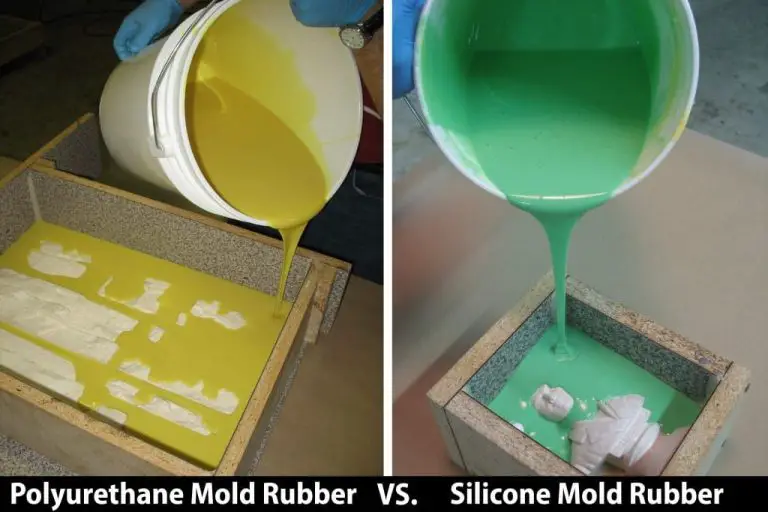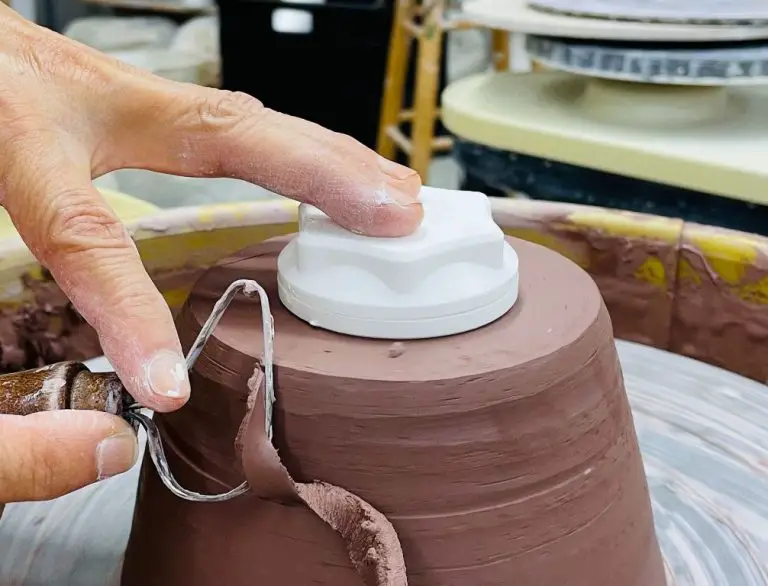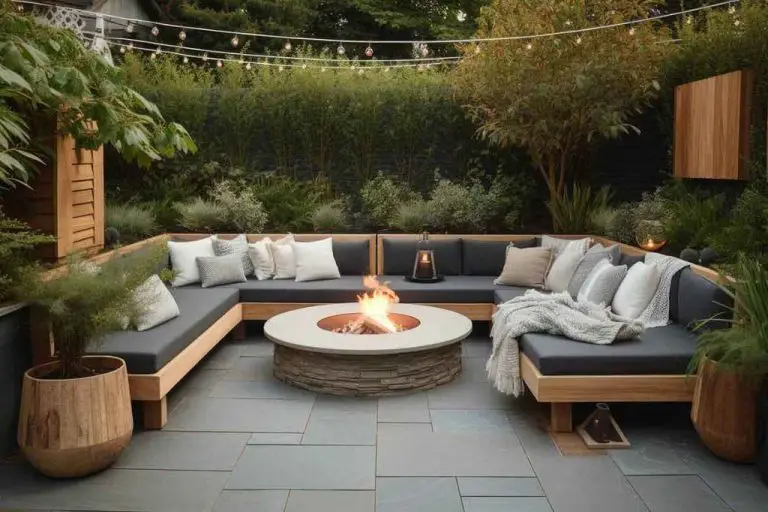What Is Added To Clay To Make Slip?
What is Clay?
Clay is a fine-grained natural rock or soil material that contains minerals such as kaolinite, illite, and montmorillonite. Clays develop plasticity when mixed with water, due to the plate-shaped structure of the mineral particles.
There are many different types of clays used in ceramics, including:
- Kaolin – Also known as China clay, this white firing clay is made up of kaolinite and is very pure. It fires to a white or near white color.
- Ball clay – A secondary clay with high plasticity and high fired strength. Ball clay fires to a light cream or tan color.
- Fire clay – Refractory clays that can withstand very high temperatures, such as those found in kilns. Fire clays are less plastic than other clays.
- Stoneware clay – Mid-range firing clays that vitrify at lower temperatures than porcelain. Can be used to make pottery, tiles, etc.
- Earthenware clay – Low firing clay, often red or brown firing. Earthenware clays do not vitrify.
The unique properties of clay are determined by its chemical composition and mineralogy. Clays are primarily composed of silica, alumina, and water, but also contain various amounts of fluxes, alkalis, and other impurities. The platy structure allows the clay particles to flatten out when mixed with water, creating plasticity.
What is Slip?
Slip is a liquid mixture of clay and water used in pottery and ceramics. It has a creamy consistency similar to heavy cream or pancake batter. Slip serves several important functions in ceramic production:
– Gluing and joining – Slip acts as an adhesive to glue clay pieces together. Applying slip to the seam and surfaces of two pieces fuses them together as the slip dries.
– Coating – Slip can be used to coat the surface of unfired clay pieces to fill pores, create a smooth surface, and provide an ideal foundation for glazing. The slip coating dries into a smooth, uniform surface.
– Decoration – Colored slips can be used to decorate or accent unfired clay surfaces. Slip trailing, sgraffito, marbling, and slip inlay are examples of decorative techniques.
– Casting – Slip can be poured into plaster molds to produce hollow cast pieces or slipcast pottery. As the plaster absorbs water, a layer of clay builds up on the mold surface.
– Adjusting texture – Adding slip to clay can make it smoother, more plastic, improve workability and make joins between pieces less visible.
Key Ingredients to Make Slip
There are three key ingredients that go into making slip for pottery and ceramics:
Water
Water is arguably the most important ingredient in slip. It serves to liquefy the clay body, allowing the clay particles to flow smoothly. The amount of water controls the viscosity of the slip – more water makes a thinner, more pourable slip while less water makes a thicker, more viscous slip.
The water content can range between 20-35% of the total slip recipe, depending on the desired viscosity. Distilled or deionized water is recommended to avoid mineral deposits and contamination.
Clay
Clay is the main ingredient that gives slip its plasticity and workability. Choosing the right type and amount of clay is crucial in obtaining the desired properties in the finished slip.
The clay content typically ranges between 65-80%. Red and white firing clays like stoneware and porcelain are commonly used, either alone or blended. The clay particle size and shape impacts the viscosity and working qualities.
Deflocculants
Deflocculants are chemicals added in small amounts, usually 0.1-2%, to prevent clay particles from clumping together. Common deflocculants used are sodium silicate, Darvan 7, and Darvan 811.
Deflocculants allow the clay to remain suspended uniformly in the water, improving fluidity and stability. They greatly reduce the water content needed to achieve a desirable viscosity.
The Role of Water
Water is a key ingredient in slip, as it hydrates the clay particles and controls viscosity. Hydration occurs when water penetrates between the stacked clay platelets, forcing them apart and allowing them to slide more easily over one another. This gives the slip more fluidity and plasticity.
The amount of water greatly impacts the viscosity of the slip. With more water, the slip becomes thinner and flows more readily. With less water, the slip thickens up. Finding the right consistency is important for achieving optimal workability and stability for casting and molding. The water content can be adjusted to produce slips of varying viscosities suited to different clay working techniques.
Deflocculants
The purpose of deflocculants is to reduce the viscosity of the slip by preventing the clay particles from flocculating, or clumping together. Deflocculants are chemicals that are added in small amounts to the slip. Some common types of deflocculants used in making clay slip include:
- Sodium silicate
- Sodium carbonate
- Darvan
The amount of deflocculant to add can vary based on the specific clay body and desired viscosity, but a starting point is usually around 0.1-0.5% of the dry weight of the clay. It’s important not to add too much deflocculant or the slip may become too thin. The proper amount can be determined by testing the viscosity and making adjustments as needed.
Clay Content
The amount of clay in a slip recipe has a significant effect on the properties and performance of the slurry. Generally speaking, higher clay content increases durability while lower clay content reduces drying time.
Clays are composed of extremely fine particles that give slip its plasticity and strength when formed into ceramics. A higher percentage of clay binds the mixture together better and results in less shrinkage, less cracking and fewer defects when firing.
However, more clay also requires more water to reach a workable viscosity. This longer drying time can increase the risk of cracking. Lower clay contents speed up drying as there is less water to evaporate. The trade-off is faster production but weaker unfired ware.
Finding the right balance is important. Many slip recipes aim for 50-70% clay content. High performance applications like porcelain often use 70% or more. Sculptures and decorative pieces may go as low as 25-40% clay for quicker drying and firing.
Testing different percentages to optimize for the clay body characteristics, production process and final use is recommended when developing a new slip recipe.
Other Possible Additives
In addition to water and deflocculants, there are a few other common additives that may be mixed into clay slip:
Coloring Oxides
Coloring oxides like cobalt, copper, manganese, and iron oxides can be added to slip to achieve different colors in the finished ceramic piece. The oxides are mixed into the slip in powder form. Typical percentages range from 3-10% of the dry weight of the clay body. The oxides influence the color, surface quality, and firing characteristics of the clay.
Opacifiers
Opacifiers like tin oxide or zirconium oxide are sometimes added to slip to make the fired ceramic more opaque and less translucent. Opacifiers are helpful for achieving brighter colors. They are added in powder form at percentages around 5-15% of the dry clay weight.
Thickeners
Thickeners like bentonite clay or cellulose ether may be mixed into slip to increase viscosity. This helps achieve optimal consistency for casting and molding processes. Thickeners are typically added in powder form at 1-3% of the total slip weight until the desired viscosity is reached.
Mixing Slip
Properly mixing slip is crucial to achieving the desired consistency and properties. Care should be taken to mix the ingredients thoroughly and evenly, ensuring the clay and water are fully integrated.
When mixing slip, it’s important to break up any clumps of dry clay. Lumps and clots can lead to uneven moisture content, which causes problems like cracking when the clay dries. Using a high-powered mixer can help shear apart clumps. Avoiding clumps also requires adding the dry clay slowly to the water rather than dumping it all in at once.
In addition to breaking up clumps, mixing needs to fully disperse the deflocculant. Deflocculants prevent clay particles from sticking together, but they must be evenly distributed. Thorough mixing blends the deflocculant throughout the entire batch of slip.
Consistency is key. The slip should be mixed for a set amount of time each batch. Mixing for inconsistent lengths of time batch to batch can lead to discrepancies in viscosity, clay content, and deflocculant levels.
By properly mixing slip to break up clumps and evenly disperse ingredients, potters obtain a smooth, homogeneous liquid for glazing and forming ceramics.
Slip Properties
The most important properties of slip that determine how it will perform are viscosity, specific gravity, and solids content.
Viscosity refers to the thickness of the slip. A slip with low viscosity will be very thin and watery, while a slip with high viscosity will be thick like pancake batter. The viscosity is important because it affects how easily the slip can be poured and how well it will hold its shape.
Specific gravity measures the density of the slip compared to water. A higher specific gravity means the slip is heavier than water. Typical specific gravities for slip range from 1.7 to 2.0. The specific gravity affects the weight and thickness of the finished ceramic piece.
Solids content refers to the percentage of clay and other solid particles present in the slip. A higher solids content will produce a thicker, heavier slip. Typical solids content can range from 35% to 70%. The solids content greatly impacts the working properties of the slip.
Testing and monitoring these key slip properties ensures the slip has the ideal qualities for the desired application and finished ceramic piece.
Testing and Adjusting Slip
Once you have mixed your initial slip, it is critical to test it to ensure it has the proper properties for your application. The two key properties to test are viscosity and specific gravity.
Viscosity measures the thickness of the slip. It is tested using a viscometer or flow cup. The viscosity must be within an optimal range – thick enough to hold together when poured, but fluid enough to pour smoothly. Target viscosity depends on factors like clay type, casting method, and piece size.
Specific gravity measures the slip’s density relative to water. It is tested using a hydrometer. Specific gravity affects the fired strength and porosity. The target range varies by clay type and desired results. A higher specific gravity yields lower porosity and denser pieces.
If tests reveal the slip is too thin, you can thicken it by adding more clay. If it is too thick, add more water. It is ideal to make small incremental adjustments and re-test after each one. Dramatic changes could lead to uncontrolled results.
Keeping detailed records of the initial recipe, measurements, and any adjustments is crucial for reproducibility. This ensures you can tweak and perfect the slip over time and recreate successful mixes in the future.
With careful testing and tuning of the viscosity, specific gravity, and other key characteristics, you can produce a customized slip optimized for your particular clay body and intended use.



